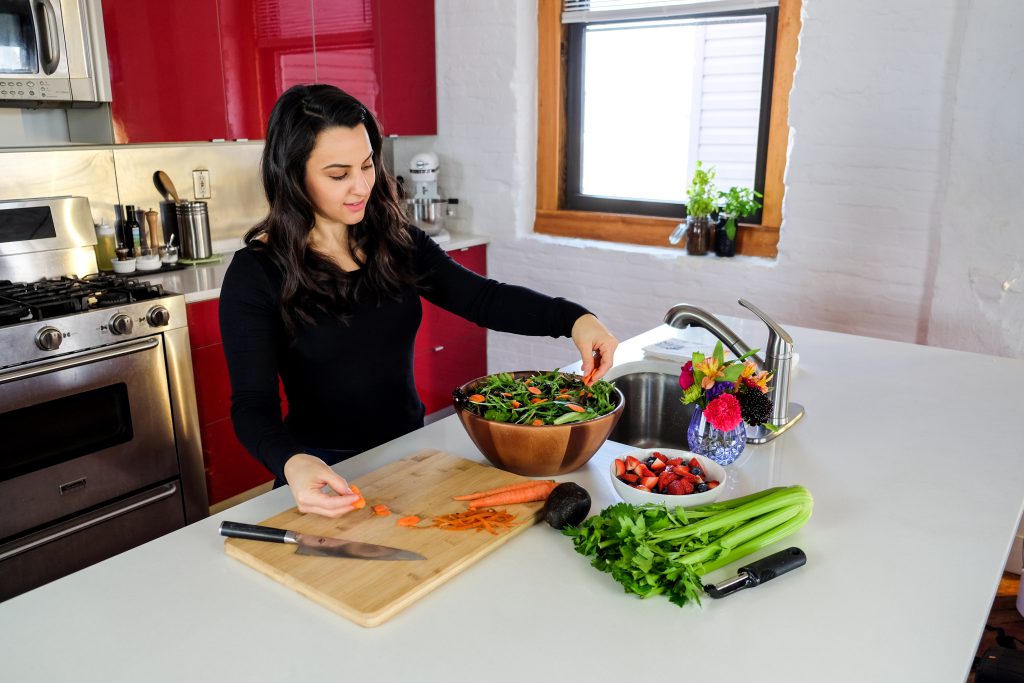Things have been wild lately with the price of, well, everything! I’ve noticed my grocery bill go up by almost 30% and I haven’t been shopping much differently than I was in the beginning of the year. If anything, I’ve been making more of an effort to be conscious of what I am buying and definitely have decreased my impulse-purchases?
If you are feeling the weight of this too, read on for some easy-to-implement tips on saving money when you are doing your food and grocery shopping. If you already do these – keep it up!

How can I save money at the grocery store?
1. Limit your purchase of prepped food and all the prepared and chopped produce. Having the store do the prepping for you is SO convenient, but you are going to pay for them to do the labor for you. It’s also pricier because you are getting all edible portions (not the broccoli stalks, stems of stuff, trimmings, etc. that you’d otherwise throw away). I’d probably recommend these items to some people, but if you are trying to save money – get it loose and prep yourself!
2. Buy store brand – in almost all cases, the store brands are significantly cheaper. Brands actually pay the store to have their products located in a certain spot on the shelf and part of that cost is handed down to the consumer. For the store brand, what do they care?! It’s cheaper and almost always identical in taste. Some of my favorite cereals are store brand, and I always go for store brand when it comes to eggs, beans, baking ingredients, butter, dairy products, frozen vegetables and fruits, condiments, and grains just to name some!
3. Don’t shy away from frozen and canned fruit and vegetables – these items are picked at the peak of freshness, which means they are also at their peak nutrition. I saw lots of interesting vegetable blends in the frozen aisle! Canned vegetables can have added sodium, so rinse them to decrease that and prepare with less salt. But they’re great options! Canned fruit and fruit cups can definitely have added sugar or be packed in syrup, so be sure to look for fruits packed in their own juices and drain it before consuming.
4. Change up your protein – consider more plant proteins like tofu, beans and lentils. These are inexpensive and a little goes a long way. They also last longer, especially beans or lentils in a can or dried. Tofu lasts long and is very versatile. You can also try tempeh, which is a more compact, cake-like variation of fermented tofu. I feel like I am not selling it, but it’s quite good! I will say that tempeh and tofu require flavor – try a flavor profile like this from Love & Lemons.
5. Come with a list! Winging it can lead to you just throwing everything in your cart that you can see and trying to figure it out when you get home. This can lead to waste (of food and money) and you feeling overwhelmed and then not cooking anything! Have a list and have that list come from a set of meals you’ve planned.

How can I better plan for grocery shopping?
One tip I give is to spend an initial larger chunk of time coming up with a list of your favorite meals and the ingredients that go into those. I keep mine in my notes app and look at it weekly to see if we are in the mood for any of those. A rule I set for myself is that my go-to meals list has to include meals with minimal ingredients.
I pick a couple of those each week to shop for and fill in the rest of the meals with 1-2 new recipes and a day for leftovers. That makes shopping a lot less overwhelming! Plus, it’s less stressful way to work new meals into the rotation. No one wants to try 5 new meals a week!
